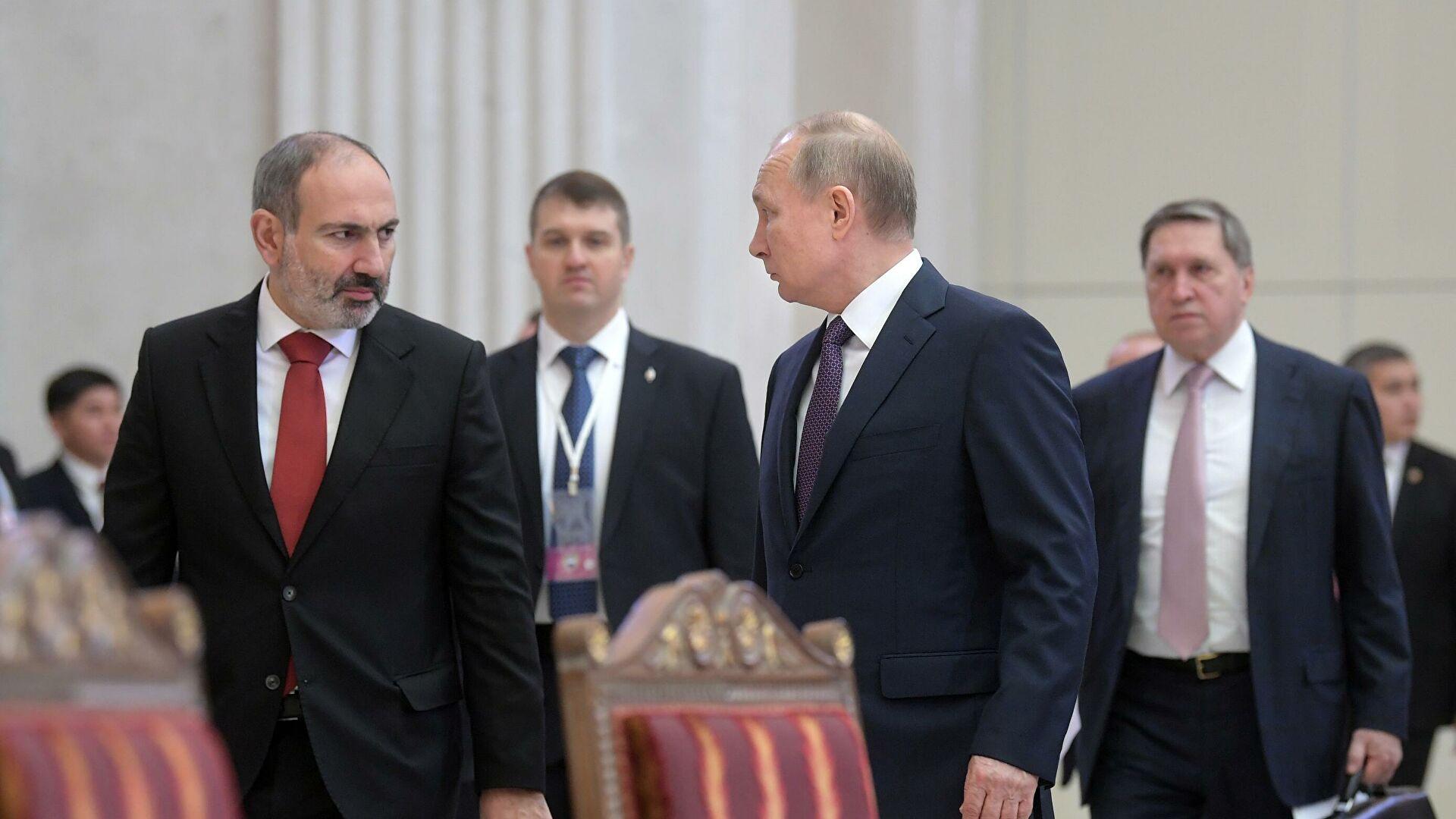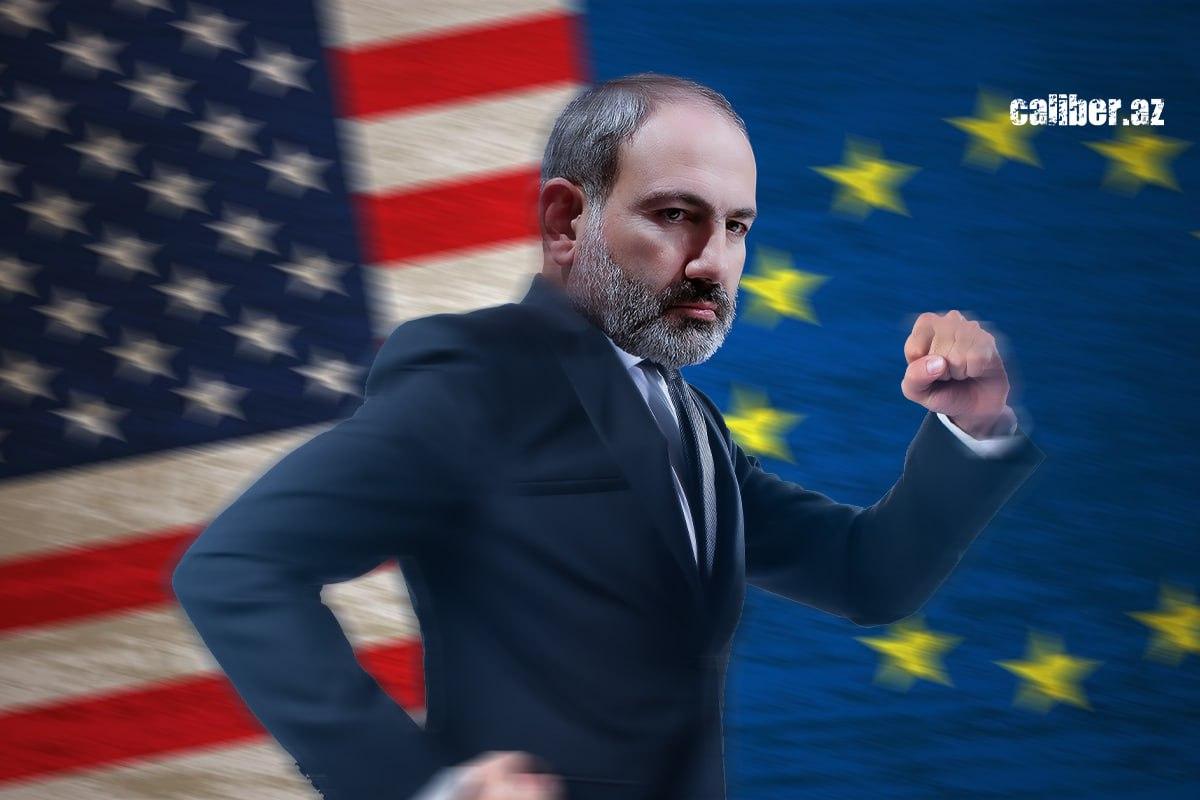Leveraging Russian ties amidst Western posturing Armenia's economic tightrope
Armenia's dependence on trade and economic ties with Russia is no secret. Thus, due to the mechanisms of re-export of sub-sanctioned goods and services to Russia, Armenian exports in 2021-2023 increased by almost 300 per cent. Moreover, the main energy and infrastructure assets of the "country of stones" belong to Russian holdings. But despite this, official Yerevan is a very harsh critic of Moscow's policy, and recently the Armenian Foreign Ministry announced its refusal to join the decision "On the CSTO Budget 2024". Public anti-Russian demarches and rapprochement with the EU and the US have long displeased Moscow. Russian President Vladimir Putin transparently hinted to Armenian Prime Minister Nikol Pashinyan about the consequences of such steps for the Armenian economy during the recent summit of the Eurasian Economic Union (EAEU) member states.
In his public statements, Armenian Prime Minister Nikol Pashinyan has repeatedly stated that his participation in the CSTO has been frozen due to the "non-participation of this structure in the protection of Armenia in its conflict with its neighbors. The wording itself is questionable, and the CSTO has repeatedly stated that it considers Armenia's sovereign territory within its settled state borders with its neighbors to be its area of responsibility. However, it is obvious that "public offenses" are just an excuse for Yerevan to justify its undisguised aspirations towards the collective West and NATO structures. Another demarche with regard to military cooperation with the CSTO was the statement of the press service of the Armenian Foreign Ministry that the republic "will refrain from joining the decision "On the CSTO budget for 2024" and participation in the financing of the organization's activities envisaged by this decision". What is important here is not so much the wording, but the fact that the statement of the Armenian Foreign Ministry was made almost ahead of the May 8 summit of the Eurasian Economic Union member states.
On the same day after the summit, Nikol Pashinyan and Vladimir Putin held a bilateral meeting, following which Russian presidential spokesman Dmitry Peskov said that the withdrawal of Russian military and border guards from a number of Armenian regions was discussed during the talks. At the same time, a few days before the meeting, Yury Ushakov, aide to the Russian president, told the media that a lot of problematic issues have recently accumulated between Armenia and Russia, "which we expect to be frankly discussed between the leaders, including a noticeable reduction in contacts between our countries at various levels, and criticism of Russia and the CSTO in Yerevan". The above-mentioned issues were to be discussed during the bilateral meeting between the Armenian Prime Minister and the Russian President in Moscow.

Thus, as Armenian political scientist Vigen Hakobyan noted, following the EAEU summit, President Vladimir Putin in a non-public format behind "closed doors" outlined Russia's position on the policy of the current Armenian authorities and voiced possible risks that the Armenian economy may face in case of further progression of anti-Russian trends in Yerevan's foreign policy course.
"It is also not accidental that during the open part of the meeting, the Russian president reminded in detail about the role of the Russian Federation in Armenia's economy, directly pointing out that the number one beneficiary of the EAEU is Armenia, whose trade turnover has grown 14 times since 2015, and primarily due to exports to Russia," the Armenian pundit noted.
During the discussion of Russia-Armenia relations, Vladimir Putin emphasized that business ties are developing very successfully, paying special attention to the growth of trade turnover: “in 2023, trade volumes amounted to about $7.3 billion, such a volume in our trade and economic ties has never been seen before".
It should be recalled here that Russian experts and officials have repeatedly mentioned that Armenia, which does not have a direct border with Russia or any other EAEU countries, is at the same time the main beneficiary of increased trade with Russia and other members of the Eurasian organization. For example, a Fitch Ratings report last year noted that exports of goods to Russia have increased by 300 per cent since 2021, with Russia accounting for 51 per cent of total Armenian exports in the first three quarters of last year. It is quite obvious that the industrial production of the stagnating economy of the "country of stones" is not able to provide such a significant volume of products on its own, not to mention agriculture, which has been declining for the third year in a row.
Accordingly, the lion's share of Armenian exports to Russia was secured through various schemes of re-purchase and re-export of foreign products and equipment, including substation dual-purpose goods transported to Russia by Armenian transportation and intermediary companies. All this flow was bypassing the US and EU sanctions, which was repeatedly noted in the Western media. Moreover, for the first time in its history Armenia achieved a positive balance (exports exceeded imports) in trade with Russia last year. In the recent past, the opposite was true: Russian exports prevailed in the trade balance. This is not surprising, especially since 40 per cent of foreign direct investment (FDI) in the Armenian economy is invested by the Russian Federation, exceeding $2 billion, and Russian business and natural monopolies own such important sectors of the Armenian economy as energy and transportation.
For example, Armenia's gas distribution networks and the gas pipeline to Iran are owned by Gazprom, the main supplier of blue fuel; in turn, since 2015, 100 per cent of the shares of Electric Networks of Armenia CJSC have been controlled by the Russian group Tashir; fuel element supplies and security at the Metsamor NPP are also provided by the state corporation Rosatom. Finally, Armenian railroads are also under the full control of the Russian South Caucasus Railway (SCR) CJSC.
Thus, despite Yerevan's pro-Western course, as well as the significant cooling of Armenian-Russian political relations for the second year, Armenian trade and economy in general are fully dependent on business ties with the Russian Federation. Therefore, it is obvious that Russia has an effective arsenal of tools to "influence" the deceitful and hypocritical politicians in Yerevan.
As a matter of fact, Armenia itself is well aware of these risks. "It is possible that Putin himself made a diplomatic move - he suggested withdrawing the 102nd military base or border guards from the Iranian and Turkish borders, to which Pashinyan objected - there is no such need yet," noted Armenian political scientist Vigen Hakobyan. - It can also be assumed that the issue of Armenia's membership in the CSTO was also discussed: it is possible that Putin hinted to Pashinyan that Russia considers Armenia's membership in the EAEU to be inexpedient in case of its withdrawal from the CSTO".
Yerevan understands perfectly well that without Russia's crutch, the Armenian economy is untenable, so they "skillfully" maneuver, playing a political game of "freezing" ties with the CSTO, periodically criticizing the Kremlin, thus avoiding Western sanctions for supplies to Russia of electronics and other dual-use equipment in the production of drones, missiles and other military equipment. On the other hand, they continue to quietly earn billions of dollars on re-exports to Russia, convincing the Kremlin of their loyalty.

Assessing the phenomenon of the recent period's economic upswing, Armenian economist Aghasi Tavadyan recently noted that along with the re-export of dual-use goods, the leapfrog growth of foreign trade was ensured by a sharp increase in the re-export of gold and diamonds from Armenia. "Of Armenia's $8.4 billion in exports, 21.5 per cent, or $1.8 billion, was gold exports, while 7 per cent or $589 million, was polished diamond exports. Overall, 28.5 per cent of all exports are re-exports of Russian gold and diamonds to the United Arab Emirates and Hong Kong," Aghasi Tavadyan emphasized. According to him, in 2023 Armenian exports increased 2.8 times compared to the previous two years, the bulk of the growth came in the last two months of the year and is mainly provided by transactions with Russian gold and diamonds: "Our government is aware of this, it replenishes our state budget and not only it."
Despite the fact that "smuggled" export-import operations and the frenzied demand for services of the banking and tourism sectors have brought Armenia a considerable amount of foreign currency, as well as strengthened the exchange rate of the national currency against the dollar, according to Armenian experts, this indicates the development of a classic "Dutch disease" that destroys the Armenian economy in the long term. "The expensive dram hinders producers, reducing the volume of local products traditionally exported from Armenia: food, industrial products, mineral, ore and other raw materials. It turns out that relatively stable and long-term activities of the manufacturing industry are shrinking, while short-term ones are significantly increasing, which worsens the sectoral structure," says Tavadyan, according to whom, in case of changes in the external conjuncture, the bubbles of the Armenian economy will burst, and the country may face serious problems.








